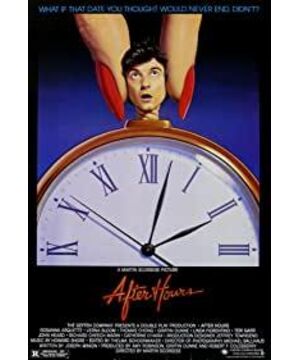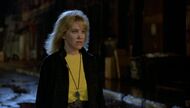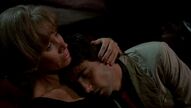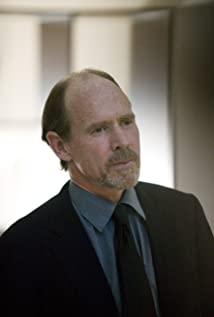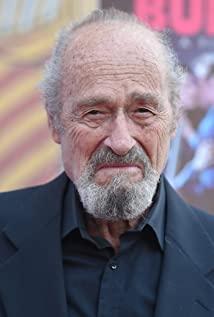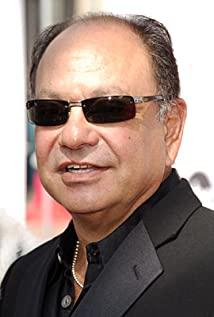The style of the whole movie of "After Hours" is a bit weird, a bit similar to David Lynch’s film style, but the main body of this movie is black humor, and there are many symbolic pictures: the skull key of the barkeeper, the toilet wall The graffiti of a shark biting a man’s genitals, punk youths, and many horrible plaster statues appearing in this part also have the feel of a David Lynch movie, which seems to foreshadow some fear in the protagonist’s heart. What's more worth mentioning is the facial expressions and facial expressions of the characters in the film. The whole film focuses on the ambiguous eyes of Marcy and Paul's horrified eyes when they seduce a man, which is long enough for a long time.
The soundtrack that impressed me the most in this film is the music of the last old woman, Peggy Lee’s "Is That All There Is?". This music is a song Paul clicked on the record player. He and the female artist With sexy female voices embracing and dancing, both of them look very tired. The picture is very strange but somewhat harmonious to a certain extent. But the female artist is also extreme and has extreme protection for the male lead. If the thief hadn't stole the statue of the male lead and accidentally fell off the car in the middle, the male lead might be entangled by the female artist again. This song is mostly a monologue of a woman, telling about an experience she saw when she was a child. The last part of the film is the quietest part of the film. It contrasts with the protagonist’s inner fear and anxiety, and the woman’s voice brings out the environment at the time. Quiet.
Old Martin made the movie "After Hours" when he was in a low ebb of "whether to withdraw from the film industry". This movie is not the same as Martin's previous movies. Compared with the gangster empire he created, this movie is more law-abiding. These are the side effects of experimental cult films. Even though this film is absurd, it is also the only comedy made by Martin (to be verified).
The film tells the various experiences of a man after get off work, as if everyone and things he met are preventing him from going home, and he was finally taken to the gate of the company in the morning because of a coincidence in embarrassment. The film begins with a phone call from the male protagonist Paul to think of a mysterious affair with Marcy. After discovering that this woman was full of lies, he left angrily. He met Marcy's barkeeper boyfriend, an extreme waitress, and a punk who forced his head to shave. The young man, the girl in the ice cream truck, and the female artist who finally helped him were even chased down as thieves by the mad residents during the whole process, while the male protagonist just wanted to go home.
The characters in Martin's films have always been distinctive, and the same is true for this film. The protagonist is a gentleman, generous, and an ordinary newspaper member who is easy to attract women of the same age but is not sincere; the first woman, Marcy, is beautiful, interesting, mysterious, and a bit wild, but depressed, liar, and extremely messy in her private life; then she meets a few All women have one thing in common, they are extremely eager to have sex with the protagonist, and their personality is extreme. It’s worth discussing that the older woman I met last in July. She is a lonely, non-existent, quiet, and a little melancholic artist. She looks numb and sluggish, but she is the most calm and extremely reactive in the whole film. A fast and adaptable character. The contrast between the characters at the end of the film is really interesting.
View more about After Hours reviews


